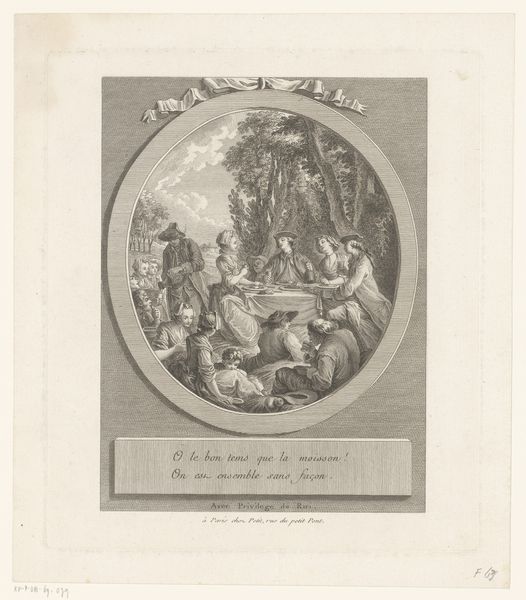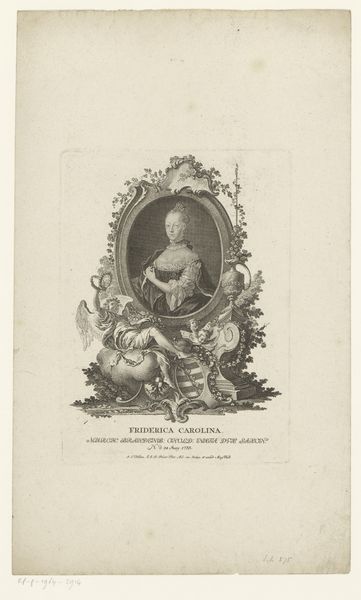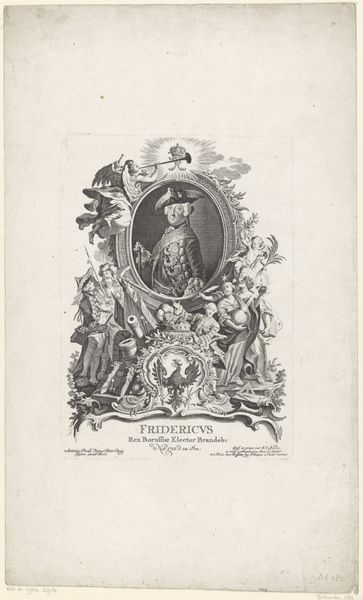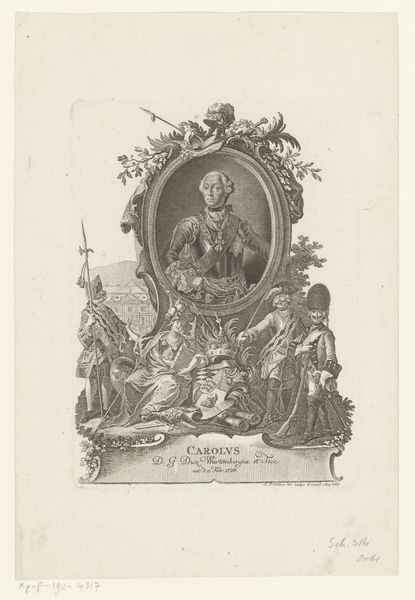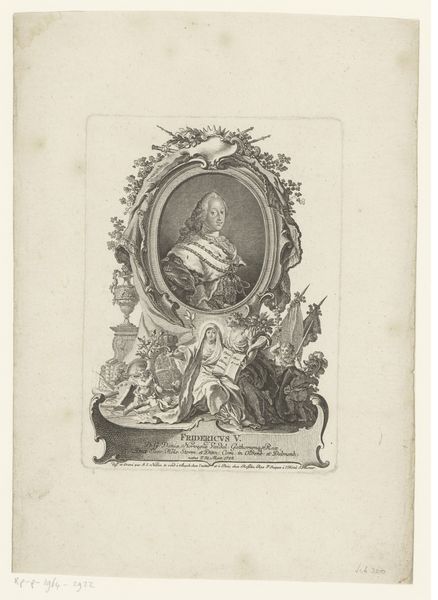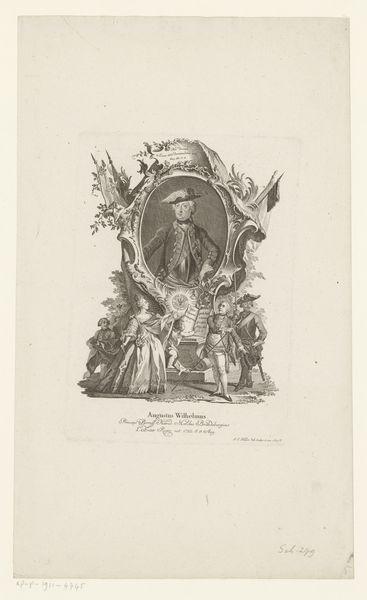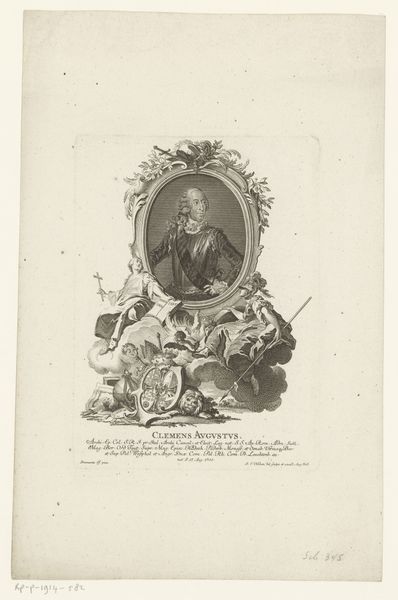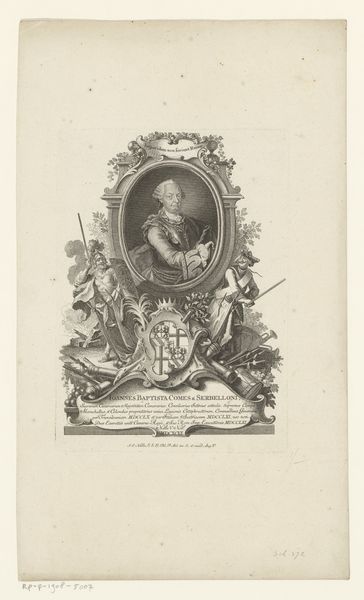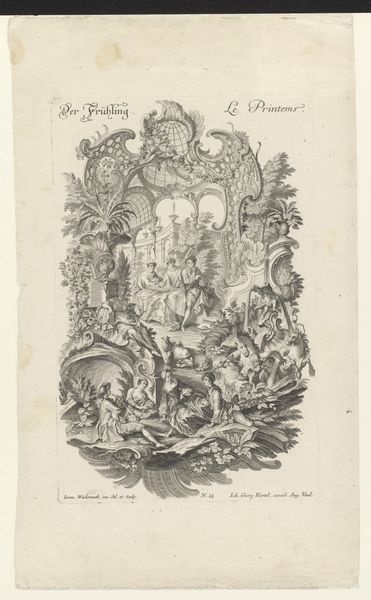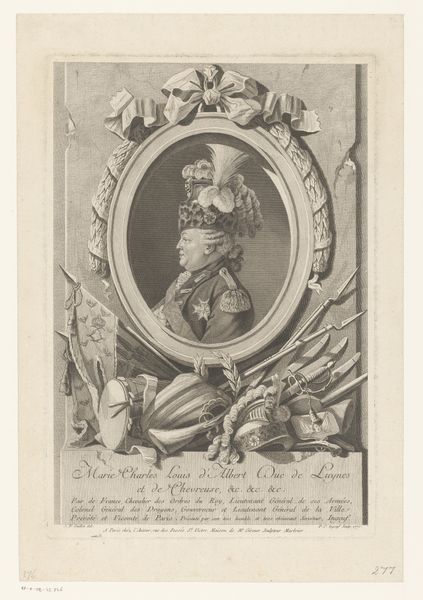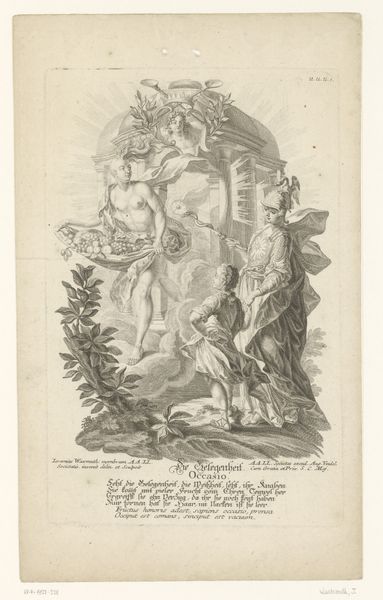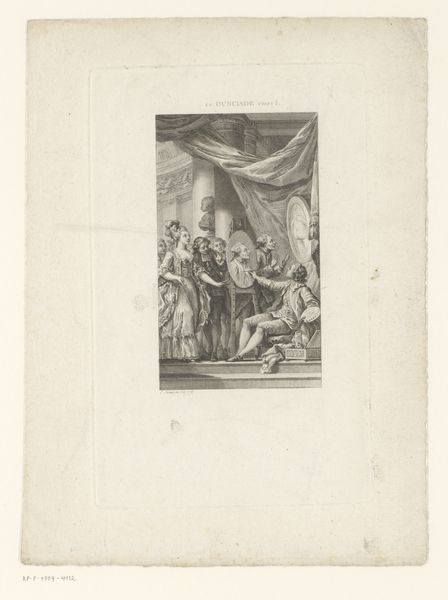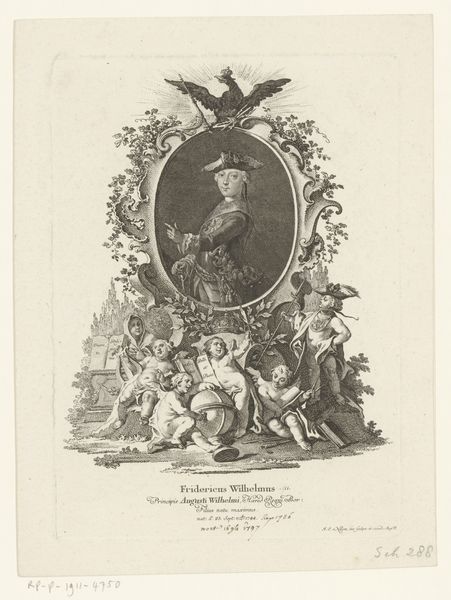
Portret van Ferdinand hertog van Brunswijk-Lüneburg 1741 - 1788
johannesaiasnilson
Rijksmuseum
Dimensions: height 220 mm, width 160 mm
Copyright: Rijks Museum: Open Domain
Curator: My immediate impression is one of intricate detail—a symphony of lines. It has such formal control. Editor: Indeed. This is an engraving dating from 1741 to 1788. The Rijksmuseum holds this "Portret van Ferdinand hertog van Brunswijk-Lüneburg" by Johann Esaias Nilson. We should explore the context. Curator: Context certainly enhances our understanding. However, look at the sheer complexity of line work! The Baroque sensibility is on full display. Notice how the lines vary in thickness to give shape and shadow. Editor: The Baroque era certainly influenced Nilson, with its emphasis on grandeur and theatricality. Considering Duke Ferdinand's military role, this engraving aimed to portray power and sophistication to his constituency. It reflects the social function of portraiture. Curator: No doubt. Note also how the composition is arranged with a strong vertical axis but enlivened by swirling Baroque ornaments to move the eye in complex circuits around the form of the duke. It gives structure while activating a formal energy. Editor: Beyond its aesthetic achievement, this portrait contributes to how elites crafted a public image of themselves during that epoch. I'm interested in understanding how Nilson's piece played into political discourse. Was it commissioned to elevate or to celebrate him? Curator: One can infer so much about historical meanings, true. However, it remains compelling in terms of the tonal range achieved using only line, or how he contrasts geometric and organic shapes to draw the eye, engaging visual dynamics. Editor: Right. Nilson’s creative interpretation and the symbolic significance of Duke Ferdinand need further consideration, especially for understanding this artifact. I find these avenues vital in appreciating the function of art and culture within history. Curator: True; Nilson did deploy such techniques in other prints. But viewing it strictly as line, shape, and tonality yields considerable aesthetic interest, especially observing the contrast between precision and decorative flamboyance. Editor: Both avenues enrich appreciation. Viewing the work in its socio-cultural landscape illuminates its historical function and its immediate impact. A perspective complementing your focus on compositional form. Curator: Precisely. Combining visual with social intelligence will help others discover and interpret the aesthetic of art. Editor: Well, then. That synthesis serves both art and those we serve, very nicely.
Comments
No comments
Be the first to comment and join the conversation on the ultimate creative platform.
